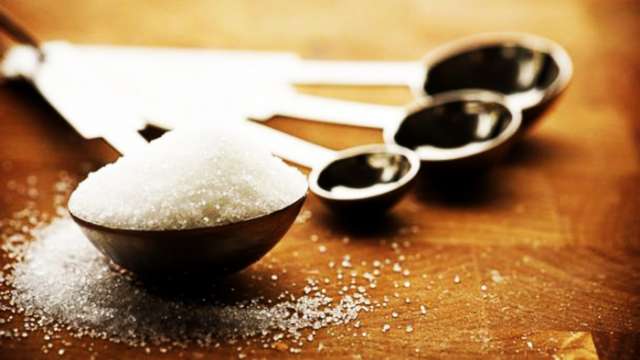Adding to the problem, sugar is hiding in many surprising products, such as oatmeal and peanut butter, and confusing food labels make it hard to know how much of it you`re getting. So what`s a girl to do?
Before you swear off everything from ice cream to strawberries, read my ground rules to satisfying your sweet tooth in the safest way possible.
Truth #1: Some kinds are better than others
It`s key to know the difference between the two main types of sugar.
Naturally occurring sugar is found in whole foods, such as fruit, vegetables and dairy products. These foods tend to be better for you because they deliver fiber (in the case of produce), as well as protein and calcium (in dairy) and other important vitamins and minerals.
Added sugars are anything sweet put into a food for flavor, from the sugar in store-bought ketchup to the honey you spoon into your tea. (Yes, "natural" sweeteners count.) These sugars are concentrated and mostly devoid of nutrients. Although honey, maple syrup and the like have some healthful antioxidants and minerals, they still pack hefty doses of sweetener per spoonful. This means you get a lot of pure sugar—and calories—in a small portion, making it easy to go overboard and cause big problems. According to the American Heart Association (AHA), increases in sugar intake over the past four decades parallel our expanding waistlines, and studies have connected added sugar, not the naturally occurring kind, to heart disease and diabetes.
Truth #2: You have to read labels carefully
A lot of packaged foods contain both naturally occurring and added sugars. But the Nutrition Facts label lumps both kinds together, giving you one combined total. Last year, the FDA proposed separating the two to make it clearer how much of each type you`re getting, but until those changes take effect, the easiest way to tell if sugar has been added is to scan the actual ingredients list. If you see sugar grams but no sweeteners listed, then none were added. If you do see any type of sweetener—including brown sugar, cane juice, corn syrup, maltose or fructose—make sure it`s not the first thing listed. By law, ingredients must be in descending order of weight, so the higher up the added sugar, the more there is per bite. Also check for multiple types of sugar, which is a sneaky way food companies make something supersweet without telegraphing it on the ingredients list.But you can automatically slash your sugar load by ditching sweetened drinks, eating mostly whole foods instead of sugary snacks and buying more unsweetened versions of packaged foods.
Truth #3: The limits are low but doable
According to the AHA, women should have no more than 100 calories of added sugar per day (about 6 teaspoons). Yet the average woman gets 18 teaspoons a day! Most of our added sugar comes from sweetened drinks and packaged foods, and the Nutrition Facts label lists sugar in grams, not calories or teaspoons, so it`s easy to lose track. Fortunately, there`s a simple formula for counting up sugar from any source: Just remember that 1 teaspoon equals about 4 grams of added sugar. So if you add a teaspoon to your morning joe and later have a chocolate protein bar with 12 grams (3 teaspoons) of sugar, you have 2 teaspoons (8 grams) left for the day.
Truth #4: Natural doesn`t mean free-for-all
Hardly any of us are inhaling too many servings of whole fruits and vegetables. But juices, smoothies and dried fruits are another story. Recently, a client was confused when I pointed out that her 15-ounce bottle of green juice contained more than 53 grams of sugar (and nearly 270 calories!). It`s all fruits and veggies, she reasoned, so why care? One problem when you gulp your produce is that you`re getting natural sugar without fiber (and it`s fiber in fruit that slows down digestion and gives your body time to metabolize the sugar). As a result, you store the excess calories as fat. Fiber also prevents blood sugar spikes that can raise your risk of type 2 diabetes.
Dried fruit can be tricky, too; without water, the natural sugars become more concentrated. You can still enjoy it, but right-size your portion: One cup of fresh fruit equals 1/2 cup of 100 percent juice equals 1/4 cup of unsweetened dried fruit. Now you`re in control of your sugar calories.
Cynthia Sass, MPH, RD, is Health’s contributing nutrition editor, and privately counsels clients in New York, Los Angeles, and long distance. Cynthia is currently the sports nutrition consultant to the New York Rangers NHL team and the Tampa Bay Rays MLB team, and is board certified as a specialist in sports dietetics.
More about:
















































